Poison hemlock
Other Common Names:
Scientific Name: Conium maculatum
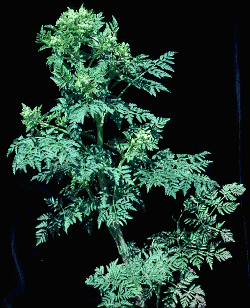
![]()
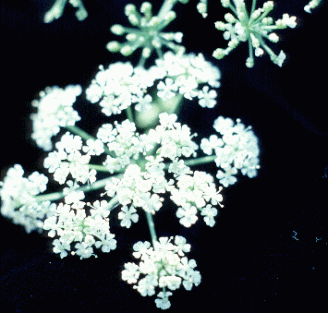 |
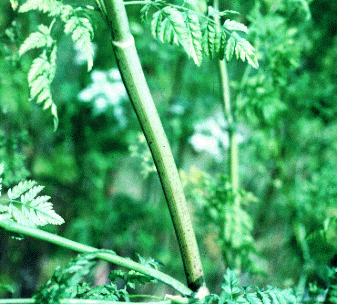 |
![]()
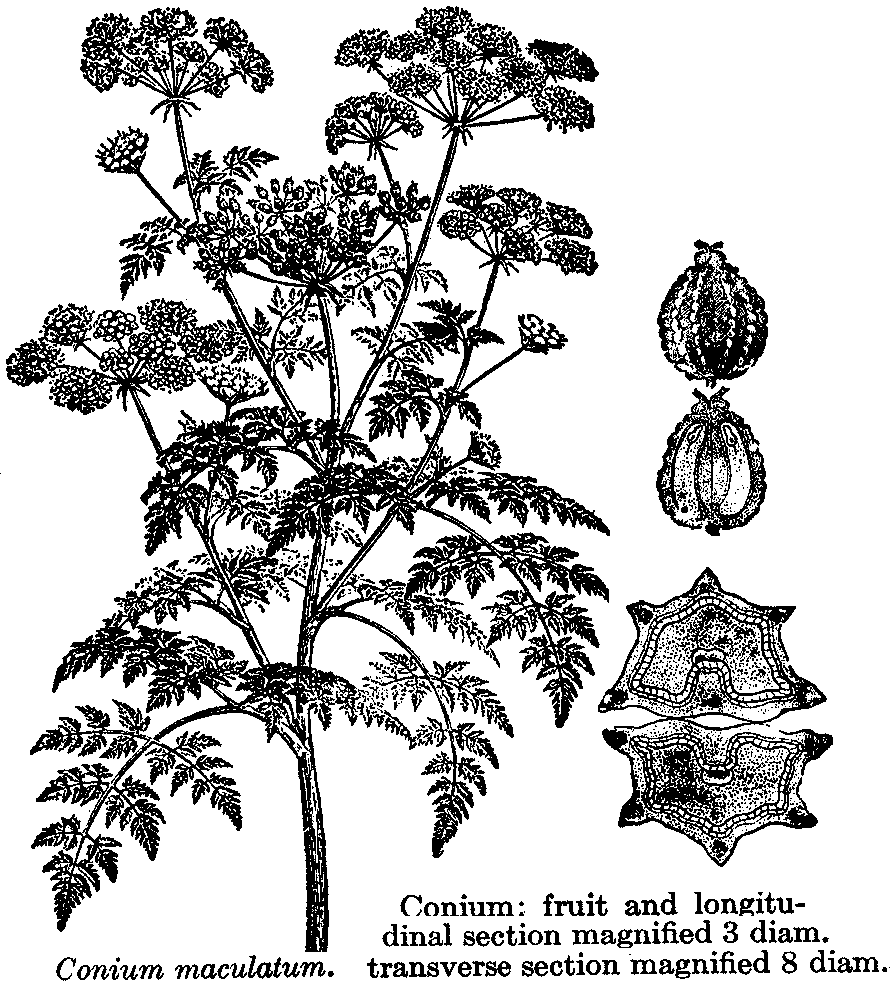
![]()
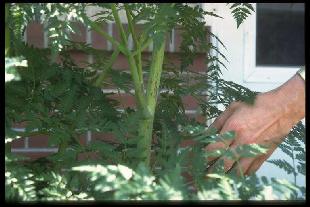
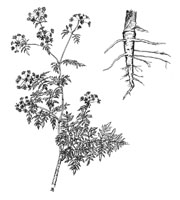
POISON HEMLOCK
Conium maculatum
(parsnip family)
TOXICITY RATINGS: Moderate to high.
ANIMALS AFFECTED: All animals may be affected. Grazing animals, swine and animals that may eat the seeds (especially poultry) are more at risk than pets.
DANGEROUS PARTS OF PLANT: All parts, especially young leaves and seeds.
CLASS OF SIGNS: Nervousness, trembling, incoordination, depression, coma, death, birth defects.
PLANT DESCRIPTION: This biennial herb (fig. 28) grows 3 to 8 feet tall and has a smooth purple-spotted stem and triangular, finely divided leaves with bases that sheathe the stem. Fresh leaves and roots have a rank, disagreeable, parsnip-like odor. The small but attractive white flowers, arranged in umbrella-like clusters, open in early summer. The fruit is tiny, flattened, and ridged. Underground is a fleshy, unbranched white taproot (fig. 28A). Unlike wild carrot (Daucus carota, parsnip family), there are no hairs on the stems or leaves of poison-hemlock and no branching, feathery bracts beneath the flower clusters. These plants are commonly found along roadsides, edges of cultivated fields, railroad tracks, irrigation ditches, stream banks, and in waste areas.
SIGNS: The toxic components include the volatile alkaloids coniine and gamma-conicine. A lethal dose for a horse is 4 to 5 pounds of leaves, cattle may be poisoned with 1 to 2 pounds, and sheep with a half pound or less . Humans are often poisoned, mistaking the roots for parsnips, the leaves for parsley, or the seeds for anise.
Affected animals show signs within 2 hours of eating the plant, and tend to become nervous, and will tremble and become uncoordinated. After the excitement phase, the animal becomes depressed. The heart and respiratory rates slow down, the legs, ears and other extremities become cold, colic and/or bloating may occur. Even at this stage, the animal may not die, but may remain like this for several hours to days, and then recover. In lethal cases, the animals tend to die within 5 to 10 hours after the onset of the clinical signs, typically from respiratory failure (in which case the mucus membranes will appear blue). A mousy odor has been reported to emanate from affected animals.
The primary time of year for poison hemlock is spring, often when there is insufficient forage available. At this time, the plant may also be more palatable. The toxicity increases throughout the growing season, and the roots become toxic only later in the year. Once dried, the toxicity is considered to be reduced but not eliminated.
Poison hemlock can also cause birth defects in ruminants and swine, with cattle and swine more susceptible than sheep and goats. The most often reported birth defects are cleft palate and spinal abnormalities. The gestational ages that have been associated with birth defects are: for goats, days 30 through 60; for cattle, days 40 through 70; for pigs, days 30 through 60. The birth defects resemble those seen with lupine, with lupine being the more dangerous plant.
FIRST AID: If animals are seen ingesting poison hemlock, call a veterinarian immediately. Treatment consists of eliminating the toxin from the gastrointestinal tract and providing supportive care. If the animals become comatose but do not die, they will require intense nursing care until they recover.
SAFETY IN PREPARED FEEDS: Reportedly, poison hemlock has a decreased toxicity when dry, but hay that contains a large proportion of poison hemlock may still cause problems (besides, it would have a low nutritional value). Recommendations are to feed little or no hay that contains poison hemlock. Seeds may contaminate grain-type feeds, making these feeds unsafe for consumption.
PREVENTION: Most animals will avoid poison hemlock if other forages are available. Tiny amounts may be consumed with little problems resulting, but significant consumption, especially of the seeds, will produce clinical signs and possibly death. Eliminating the plant from the pasture is the best solution; treatment with herbicides may be tried. Be sure all plants are dead prior to re-introduction of animals, since treated plants may be more palatable. Poison hemlock may be difficult to eradicate.
![]()
 Wildflower
Seed For Sale
Wildflower
Seed For Sale